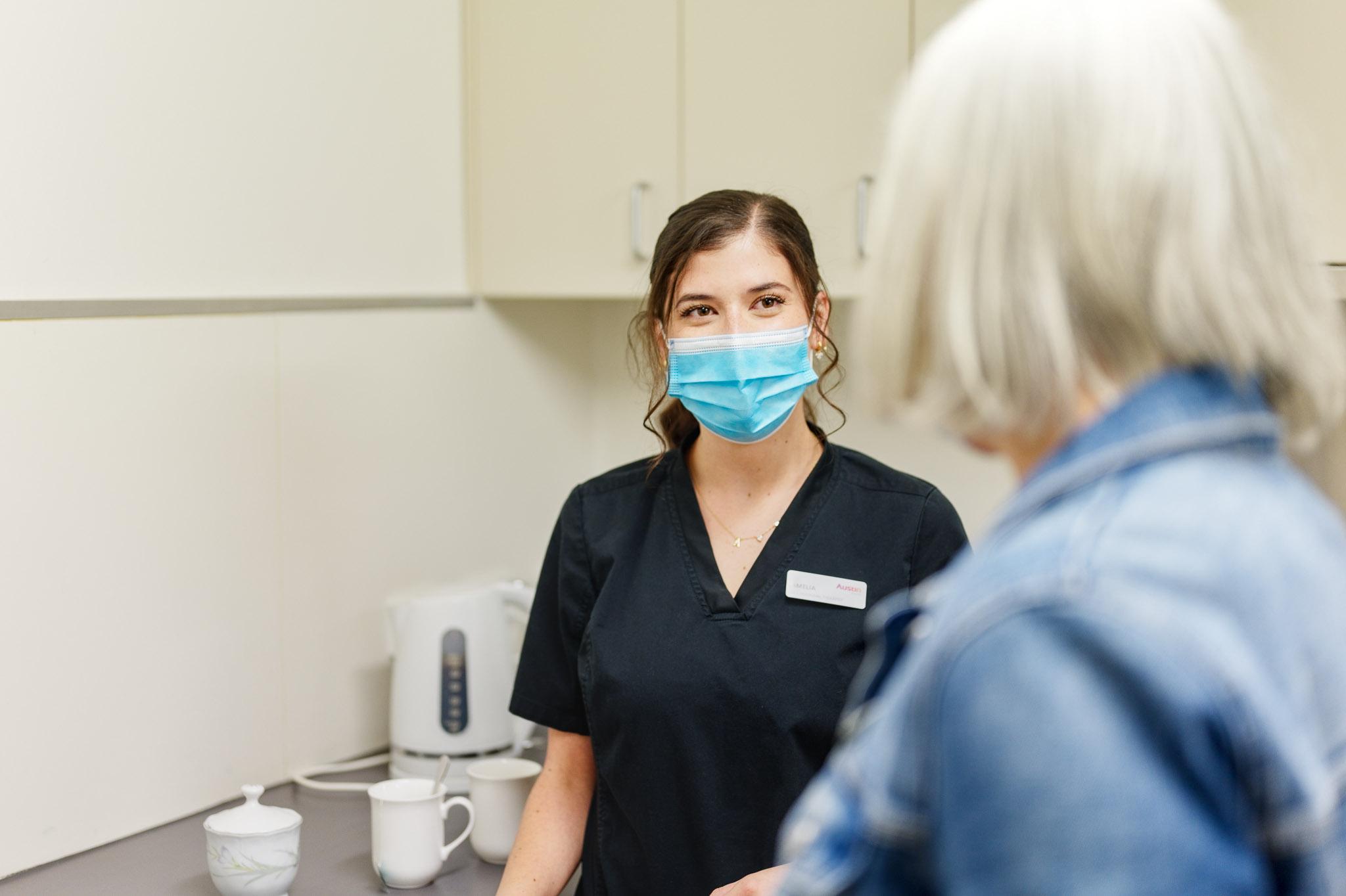
Published: Thursday 22 May 2025
Changes to Home Modifications Operational Guidelines: NDIA Response to Frequently Asked Questions
NDIA has provided the following responses to frequently asked questions that Occupational Therapy Australia has received from members about the NDIA updated Home Modifications Operational Guidelines. The questions are from the NDIA Changes to Home Modifications Operational Guidelines member forum held on 24 October 2022.
The answers provided by NDIA are accurate at the time of publication but are subject to change. Please refer to the NDIA website and the NDIA Home Modifications Operational Guidelines for the most current guidance.
What qualifies as a restrictive practice under NDIS?
Restrictive practice means any practice or intervention that has the effect of restricting the rights or freedom of movement of a person with disability. Under the National Disability Insurance Scheme (Restrictive Practices and Behaviour Support) Rules 2018, certain restrictive practices are subject to regulation. These include seclusion, chemical restraint, mechanical restraint, physical restraint, and environmental restraint.
Where an NDIS participant’s behaviours of concern place themselves or others at risk of harm, and subsequently a regulated restrictive practice is required, a behaviour support plan must be developed and lodged with the NDIS Commission. Under the NDIS Commission, registered providers who develop behaviour support plans or use restrictive practices (implementing providers) are required to comply with the NDIS Quality and Safeguarding Framework, which is underpinned by the same high-level guiding principles, including human rights and a person-centred approach as the national framework.
Refer to the NDIS Commission website for full details on restrictive practice.
Are bed rails considered as ‘restrictive’ under NDIS restrictive practice guidelines?
When considering if equipment is classified as restrictive practice, you need to consider the intent of the practice being considered or used. If the intent of the equipment is to prevent the person doing something they could ordinarily do and they want to do, in order to prevent or control the behaviour then it is restrictive practice. For example, if the bed rails restrict a person’s ability to get out of their bed independently, then they are considered restrictive practice. If the intent of the piece of equipment is as a therapeutic device, then it may not be restrictive practice. For example, if the bed rail is to enhance bed mobility, and the client can still get out of bed safely and independently, it is not restrictive practice. If you have any queries, it is best to contact the NDIS commission for further clarification.
Keep an eye on OTA CPD Events page for Recognising Restrictive Practices training.
When recommending bed rails/poles/sticks it is also worth referring to the OTA Position Statement to guide your reasoning and practice.
Are seat buckle covers considered as ‘restrictive’ under NDIS restrictive practice guidelines?
Seat belt covers and harnesses, are not generally considered as restrictive practice, as seatbelts are required by law to be worn for safety when travelling in a vehicle. Some states have guides on this (NSW and VIC), and it is best to check your states specific rules. In some states you are required to carry a certificate (medical) that is reviewed yearly as to why you are needing this to travel.
Some useful links:
- Practice Guide: Recognising and Reducing Mechanical Restraint: Practice Guide
- Mechanical Restraint Safe Transportation Guide
Can I bill for sessions a student has run under NDIS?
NDIS states that OT students on clinical placement can provide services to NDIS participants, provided they are under the supervision of a qualified OT when delivering the services, and the participant has agreed that the student may deliver specific aspects of the support. You can find more information on the NDIS webpage.
Can I provide NDIS services when I am not NDIS registered? Is there anything I need to consider?
The aim of registration within the NDIS system is to provide some assurance to NDIS participants that the provider’s services and supports meet the level of quality and safety stated in the NDIS Practice Standards. The NDIS Commission provides information for non-registered providers. Non-registered providers can treat clients who are self managed, or plan managed. However, they still have certain obligations including:
- abiding by the NDIS Code of Conduct(in addition to the professional codes and guidelines you follow in your usual practice as an OT).
- unregistered providers must be able to effectively manage complaints that may concern the quality and safety of supports and services being provided. Non-registered providers are unable to see clients whose funds are NDIS managed.
I am considering becoming NDIS registered, what do I need to consider and where can I gain support?
The NDIS website is a great resource when starting in this field. It has information about registration, using the portal, assistive technology, reasonable and necessary criteria, price guides etc. It will take time to learn the processes and systems, and we also recommend reaching out to your peers to gain support and advice.
It is worth reviewing the OTA CPD Events for webinars and workshops to learn more about OT and NDIS. There are also NDIS resources on the OTA website.
If you use social media, there are some support groups for OT's in the NDIS field. Other organisations may also have CPD opportunities.
My registration with NDIS is due for renewal and I am required to complete an audit (certification/ verification). Is there any assistance from OTA to guide me through the process?
The Allied Health Professions Australia (AHPA) have developed a very comprehensive resource to support clinicians through the NDIS registration process. The webpage provides guidance for clinicians moving through either the verification or certification pathways. You will find information, templates, and tips for each stage of the process. The resource has received very positive feedback form clinicians who have completed the registration process. You can find the AHPA resource here. The difference between certification and verification audits is explained well here.
How do I know if I meet NDIS’ requirement for being a “suitably qualified Assistive Technology (AT) assessor”?
NDIS stipulates that a suitably qualified AT assessor must demonstrated experience in professional/ clinician supervision and development as defined Ahpra. This requires that an OT works within their scope of practice, taking into consideration their competencies and capabilities in this particular work. For example if you are asked to carry out an assessment for AT that you haven’t done before, that is not within your experience or competency for completing, then we would recommend referring on to a suitably qualified therapist or obtaining appropriate supervision and guidance.
Useful resources:
- AHPRA Occupational Therapy Competency Standards
- [OTA Scope of Practice Framework](https://otaus.com.au/publicassets/725829df-2503-e911-a2c2-b75c2fd918c5/Occupational Therapy Scope of Practice Framework (June 2017).pdf)
What qualifications does someone need to have to become an allied health assistant for NDIS and other work?
OTA’s recommends OTs employ AHAs who have gone through some form of AHA training to ensure they have basic understanding and competencies in the role. E.g., the Certificate IV in Allied Health Assistance, with electives in occupational therapy.
The NDIA have updated the description of Level 1 & Level 2 Therapy Assistant in the Support Catalogue. Practicalities of the work environment, the therapy assistant’s experience, skill and qualifications will determine what roles they are able to undertake and the level of supervision and monitoring required. You can find more information on the NDIS webpage here.
Allied health assistants must work under the direct clinical oversight and supervision of a qualified OT. They are unable to complete assessments or make recommendations to clients. The supervising clinician/OT holds the legal responsibility for the AHA therefore, you will need to use your clinical judgement to determine the level, and nature, of supervision and clinical oversight the AHA requires. It is important that you are confident that the AHA is working within their scope of practice and level of competence.
Refer to the AHA FAQ’s for more information on supervision and frameworks for AHA’s.
Related topics

10 January 2025
Route Development Tips
Essential tips for planning and optimizing road routes for efficiency, safety, and cost-effectiveness.

14 May 2025
Application Form - Mental Health Endorsement
Access the OTA Mental Health Endorsement application form here.

26 November 2024
Position Statement: Evidence-Based Practice (2019)
Evidence-based practice (EBP) is a key element of best practice in occupational therapy. This position paper covers what evidence based practice is, the rationale for using EBP, the different contexts for use and the responsibilities of occupational therapists, employers, and the wider profession for the use of, and contribution to, EBP.

